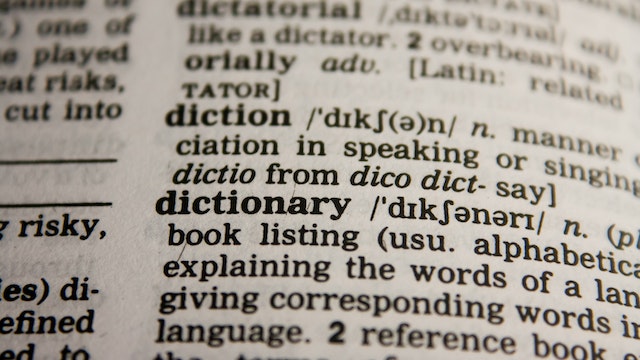If you’ve ever found yourself in the middle of a sentence, searching for the right word, or feeling as if your message got lost in a sea of “ums” and “uhs,” you’re not alone. The capacity to communicate effectively and assertively is a skill desired by many but mastered by few. But guess what?
Becoming more articulate isn’t some magical trait available to only a select few; it’s a skill that can be honed and refined. Whether you’re a beginner at public speaking or someone more advanced looking for a refresher, this article unveils eight powerful secrets to help you communicate with clarity, confidence, and charisma.

1. Be an Avid Reader

Reading is far more than just scanning lines of text; it’s a gateway to becoming more articulate. When we read, our brains perform multiple operations: recognizing words, understanding syntax, grasping meanings, and even “hearing” the text’s natural rhythm and flow. This multifaceted mental exercise equips us with an arsenal of linguistic tools that make us more eloquent and articulate in everyday interactions.
For Beginners: Start Simple But Be Consistent
If you’re new to developing a reading habit, start small, but be consistent. Choose topics or genres that you already find interesting; this way, the practice sticks faster. Start with articles, short stories, or lighter novels.
Aim to read a little bit every day. Consistency trumps volume; the more regularly you read, the quicker you’ll notice improvements in your articulation.
Reading Apps and Tools for Beginners
Reading apps like Audible for audiobooks or Kindle for digital books can be handy for those constantly on the go. Word-a-day calendars or apps are also wonderful tools. They introduce a new word daily, offer its definition, and usually provide example sentences.
Try to use your new word in a sentence or two each day. This active recall practice embeds the word in your long-term memory, making it easier to retrieve when searching for that perfect term in conversation.
Pro Tip
Imitate effective speakers. Find celebrities, artists or professionals that are articulate and listen to their speeches.
For Advanced Speakers: Challenge Yourself with Complex Texts
If you’re already comfortable with reading and have a robust vocabulary, the next step is to challenge yourself. Pick up material that is more complex and dense.
Classical literature, academic journals, technical papers, and even legal documents can provide the mental gymnastics you need. They introduce specialized vocabulary and complex sentence structures and arguments that require higher levels of cognitive engagement.
Advanced Tools and Techniques
For those looking to deep-dive into language, techniques like close reading can be helpful. This involves reading a text slowly, critically, and multiple times, dissecting its nuances at the level of individual words and sentences.
Another advanced technique is to read works translated from other languages. This exposes you to idioms and phrasing rooted in different linguistic and cultural paradigms, expanding your understanding and appreciation of language’s versatility.
2. Practice Active Listening

When we think of becoming more articulate, our minds usually jump to speaking. However, active listening is one of the most overlooked yet crucial aspects of effective communication.
Active listening isn’t just about hearing the words spoken by another person; it’s about fully engaging in what the speaker is saying, understanding the nuances, and responding thoughtfully. This reciprocal process makes conversations more meaningful and significantly enhances your articulation skills.
For Beginners: Mastering the Fundamentals
If you’re starting to work on your active listening skills, the first step is to be fully present during conversations. In today’s digitally saturated world, it’s easy to become distracted. Make a conscious effort to put away your phone and give your undivided attention to the speaker.
Avoid interrupting, and try not to formulate your response while the other person is still talking. Let them complete their thoughts before you chime in. If you’re finding it hard to focus, a simple trick is to paraphrase what the speaker has said in your mind. This ensures you’ve grasped the main points and sets the stage for a more considered response.

Active Listening Exercises for Beginners
One practical exercise to enhance active listening is engaging in what is often termed ‘reflective listening.’ After someone makes a point, mirror it back in your own words to confirm understanding.
For example, you could say, “So what I’m hearing is…” or “Are you saying that…?” This approach demonstrates that you’ve been listening and clarifies any possible misunderstandings on the spot.
For Advanced Speakers: Beyond Basic Techniques
Active listening can go a step further for those more experienced in public speaking or interpersonal communication. Try attending events like lectures, debates, or workshops focusing on less familiar topics. This limits your listening skills and forces you to engage with unfamiliar vocabulary and complex ideas.
Listen to what is being said and how it is being said. Observe the speaker’s pace, the emphasis on particular words, the use of pauses for effect, and how all these elements contribute to the overall impact of the speech. This analysis level can provide valuable takeaways to incorporate into your articulation strategies.
Advanced Tools for Active Listening
Various tools and platforms exist to listen to experts in different fields articulate complex subjects. Podcasts, TED Talks, and even platforms like Clubhouse offer many resources. Some advanced listeners even transcribe portions of these talks to dissect sentence structures, choice of words, and rhetorical devices employed by proficient speakers.
3. Slow Down

We often speed up our speech in our eagerness to get our message across. Speaking too quickly can result in stumbling over words or conveying ideas incompletely.
For Beginners: Practice counting to three silently in your head before responding to a conversation. This brief pause gives your brain extra time to organize your thoughts.
For Advanced Speakers: Remember to pace yourself while delivering a speech or presentation. Use pauses effectively to emphasize points or give your audience time to digest the information.
Action Item
Make sure to join a public speaking group. Find groups in your area that practice public speaking.
4. Enunciate Clearly

Mumbling or speaking too softly can make even the most well-constructed thoughts sound incoherent.
For Beginners: Sing! It sounds quirky, but singing along to your favorite songs can help with diction and clarity.
For Advanced Speakers: Work on tongue twisters or specific exercises to improve articulation. This will ensure that each word you say is clear and distinct.
Pro Tip
Picture your success. Before a presentation, visualize yourself speaking confidently and effectively.
5. Expand Your Vocabulary

Having a diverse vocabulary allows you to express thoughts with precision.
For Beginners: Start by learning a new word each day. Use it in sentences to ensure it becomes a permanent part of your vocabulary.
For Advanced Speakers: Dive into specialized vocabularies. For example, explore enology (the study of wines) if you’re into wine. It’s not just about big words but the right words.
6. Organize Your Thoughts

Structured thoughts translate into articulate speech.
For Beginners: Before entering a conversation or meeting, jot down key points you want to discuss. It acts as a roadmap for your dialogue.
For Advanced Speakers: Consider mind mapping or using techniques like the pyramid principle, which ensures your most important messages are delivered clearly and are supported by subsequent arguments.

7. Body Language Matters

Non-verbal cues often “speak” louder than words. Ensure your body language aligns with your message for coherent communication.
For Beginners: Make eye contact when speaking, and avoid closed-off postures like crossed arms. This demonstrates confidence and openness.
For Advanced Speakers: Dive deeper into the nuances of body language, like mirroring and using open palm gestures. This can enhance trust and rapport with your audience.
8. Continuous Feedback and Practice

The journey towards becoming more articulate isn’t a one-time event; it’s a continuous process. Just like a musician hones their craft through relentless practice and constructive feedback, you too can refine your articulation skills similarly. And while the thought of practicing conversations may sound strange, there are many practical ways to do it, along with getting the feedback you need for improvement.
For Beginners: Baby Steps Count
If you’re starting this journey, remember that practice doesn’t always have to be grand or formal. Everyday conversations are opportunities to practice. After casual chats or more serious discussions, jot down notes on what you think you did well and areas where you could improve.
Did you feel you mumbled? Were you clear and concise, or did you find yourself going off on tangents?
Don’t hesitate to ask for feedback from people you trust—friends, family members, or colleagues. Sometimes, people around us notice things that we are blind to.
Maybe you use certain filler words too often, or your tone could be more engaging. Take their feedback seriously, but remember to filter it through your self-assessment.

Practical Exercises for Beginners
One easy exercise for beginners is to rehearse common scenarios alone or with a friend. Whether it’s a job interview, a presentation, or even a date, practicing the language you’ll use in specific contexts can make a difference. You can also use technology; apps designed to improve public speaking can offer real-time feedback on your pacing, clarity, and use of filler words.
For Advanced Speakers: The Devil is in the Details
If you’re already a seasoned speaker, your improvements come in subtle refinements. Even a small filler word or a slightly misjudged pause can make a significant difference at an advanced level.
One effective method to fine-tune your skills is to record yourself. Video or audio recording can offer invaluable insights, whether during a presentation, a public speaking engagement, or even an important meeting. Playback can reveal tiny imperfections you might have missed at the moment—from the overuse of filler words like “um” and “uh” to a monotonous tone that could be varied for more impactful communication.

Advanced Tools and Techniques
Various software tools are available for those who wish to get into the nitty-gritty of their speech patterns. These can provide a detailed analysis, including the frequency of filler words, tone and pitch variations, and even your words’ emotional impact. Joining advanced public speaking clubs like Toastmasters, where you can receive professional-level feedback, is another excellent avenue for improvement.
In conclusion, becoming more articulate is a journey that requires dedication, practice, and continuous learning. By incorporating the above eight secrets into your daily life, you’ll be well on your way to conveying your thoughts and ideas with clarity and confidence. Everyone starts somewhere, so embrace every opportunity to communicate, refine, and grow.






